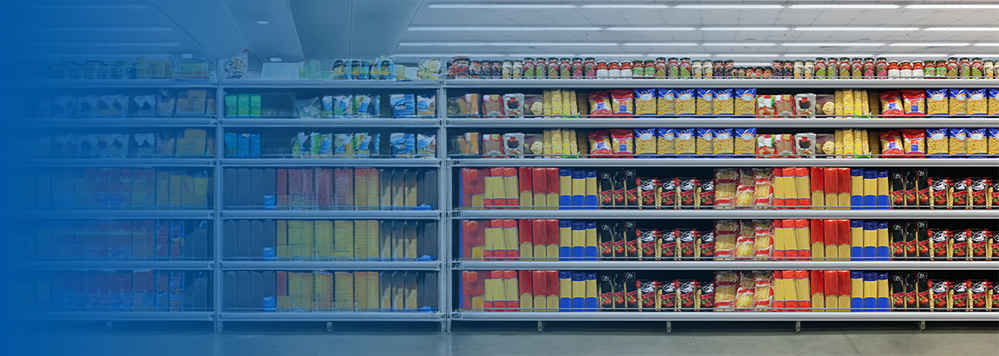The heartbeat of the logistics industry lies in the storage and movement of goods. Warehouses, once considered mere storage spaces, are now transforming into dynamic arenas where AI and robotics are reshaping the industry. Unlike traditional warehouses reliant on manual labour, these advanced facilities leverage a seamless integration of artificial intelligence (AI) and robotics to streamline operations, enhance efficiency, and redefine industry standards. With the rise of e-commerce, there never has been a greater demand for revolutionising warehouse operations.
Key Features of Automated Warehouses
Robotics Integration:
Automated warehouses employ robotic systems for various tasks, from sorting and picking to packing and shipping. These robots are designed to work collaboratively with human operators, maximising efficiency in the process.
AI-Driven Decision Making:
Artificial intelligence plays a pivotal role in automated warehouses by optimising inventory management, predicting demand patterns, and orchestrating the flow of goods. This ensures real-time adaptability to market fluctuations and minimises the risk of overstock or stockouts.
Material Handling Systems:
Advanced conveyor belts, automated guided vehicles (AGVs), and other material handling systems transport goods within the warehouse. These systems are programmed to navigate through the facility, avoiding obstacles and optimising the movement of products.
Integration of IoT Sensors:
Internet of Things (IoT) sensors are strategically placed throughout the warehouse to provide real-time data on inventory levels, equipment health, and environmental conditions. This data-driven approach enables proactive decision-making and maintenance.
The Synergy of Automation and Data Dynamics
Modern warehouses are witnessing a departure from conventional practices, evolving into dynamic hubs where machines and data intricately collaborate. A report by McKinsey & Company reveals that the strategic implementation of AI and robotics has yielded a commendable 20% enhancement in operational efficiency within warehouse environments.
This shift is not just a mere adoption of technology; it's a seismic change in the very essence of how warehouses operate. The synergy between automation and data has transformed these spaces into sophisticated ecosystems where efficiency isn't just a goal; it's a standard.
Initiatives by Corporate Pioneers
Some corporations have strategically embraced automation as a cornerstone of their operational ethos. Amazon, a global e-commerce titan, has exemplified this commitment through the deployment of Kiva robots within its fulfilment centres. These robotic entities seamlessly navigate these facilities, imparting a level of efficiency reminiscent of a well-choreographed logistical ballet.
Noteworthy as well is Alibaba's smart warehouse in China, a testament to cutting-edge innovation. Here, robotic entities meticulously pick, pack, and dispatch products with surgical precision, resulting in reduced delivery times and an unparalleled reduction in logistical errors.
These initiatives aren't merely about deploying machines to perform tasks; they represent a fundamental shift in how businesses approach their logistical challenges. It's about embracing technology as a partner in the pursuit of efficiency and precision.
Statistical Insights
There is numerical data to substantiate these transformative trends. According to a comprehensive study by MarketsandMarkets, the global warehouse automation market is anticipated to burgeon to an impressive $22.4 billion by 2025. The warehouse robotics market has an estimated worth of $6.1 billion in 2023 and is projected to reach $10.5 billion by 2028. This astronomical figure accentuates the monumental financial investment and underscores the pivotal role automation is poised to play within the industrial landscape.
Moreover, warehouses incorporating automation technologies have witnessed a noteworthy average reduction of 30% in operational costs. This economic efficiency contributes to the viability and sustainability of these transformative technologies.
Challenges of Adopting Warehouse Automation
The adoption of warehouse automation, characterised by the seamless integration of artificial intelligence (AI) and robotics, presents a landscape rich in innovation but not without its challenges. One significant hurdle is orchestrating a smooth transition for the existing workforce amidst the influx of automated technologies. Businesses must implement comprehensive training programs to upskill employees, redesign roles to align with automated processes, and foster open communication to address concerns, all while ensuring minimal disruption to existing employment structures.
Furthermore, the operational cost reductions promised by automation bring forth a delicate balancing act for businesses seeking to maintain competitive pricing for consumers. This necessitates a strategic investment approach, focusing on technologies that align with specific operational needs, negotiating better deals through scale economies, and gradually passing on efficiency gains to consumers to sustain competitiveness in the market.
As warehouse technologies advance, the need for a robust regulatory and ethical framework becomes paramount. Data privacy regulations must be strictly adhered to, ensuring the secure collection and storage of information. Safety standards for robotic systems are essential, preventing risks to human workers and the surrounding environment. Transparent communication about the use of AI and robotics is crucial to address concerns related to job displacement and technology-driven decision-making. Navigating these challenges requires a careful blend of technological innovation, strategic planning, and ethical considerations to ensure a harmonious evolution within the realm of automated warehouses.



